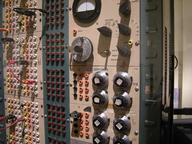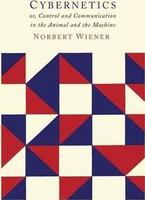Subject

photo credits: Wikimedia Commons
An analog computer or analogue computer is a type of computer that uses the continuous variation aspect of physical phenomena such as electrical, mechanical, or hydraulic quantities (analog signals) to model the problem being solved. In contrast, digital computers represent varying quantities symbolically and by discrete values of both time and amplitude (digital signals). Analog computers can have a very wide range of complexity. Slide rules and nomograms are the simplest, while naval gunfire control computers and large hybrid digital/analog computers were among the most complicated. Complex mechanisms for process control and protective relays used analog computation to perform control and protective functions. Analog computers were widely used in scientific and industrial applications even after the advent of digital computers, because at the time they were typically much faster, but they started to become obsolete as early as the 1950s and 1960s, although they remained in use in some specific applications, such as aircraft flight simulators, the flight computer in aircraft, and for teaching control systems in universities. Perhaps the most relatable example of analog computers are mechanical watches where the continuous and periodic rotation of interlinked gears drives the second, minute and hour needles in the clock. More complex applications, such as aircraft flight simulators and synthetic-aperture radar, remained the domain of analog computing (and hybrid computing) well into the 1980s, since digital computers were insufficient for the task. Source: Wikipedia (en)
Works about analog computer 2
Subject - wd:Q63759
